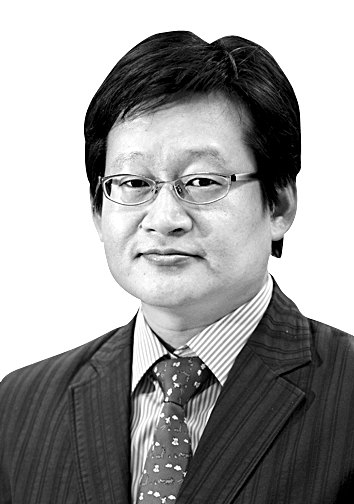What to do about the ‘Chip 4’ alliance?

The author is an editorial writer at the JoongAng Ilbo.
It has been unsettling to watch China flex its muscles under the “Wolf Warrior” foreign policy. The rough and tough ways of Beijing have baffled many around the globe. Korea has often been made an example of. For deploying the Thaad U.S. missile defense system, Korean enterprises had to endure broad retaliatory actions. The Moon Jae-in government in 2017 came under pressure to agree to Beijing’s terms not to repeat a Thaad-like upset, which was an outright violation of sovereignty. The government’s submissive attitude towards Beijing became a target for the conservatives against the governing party during the last presidential election.
The new government under President Yoon Suk-yeol took a different stand. Yoon vowed to join the U.S.-led Indo-Pacific Economic Framework (IPEF), which basically calls for U.S. allies in Asia and the Pacific to back Washington and lower reliance on China. Seoul has also been beckoned to join the U.S.-led “Chip 4” alliance. The other two invitees — Japan and Taiwan — willingly complied. The idea is to build a stronger network among America, with strength in chip design and equipment, Japan, with strength in materials, and South Korea and Taiwan — the two chip manufacturing powers. Despite the high risk of upsetting Korea’s biggest chip market, China, the general belief is that Korea would be better off joining the Chip 4.
The situation requires cool-headedness. Networking of core supplies among allies has been under study for several years. In 2018, China overtook the U.S. in terms of the total amount of science publications, according to the U.S. National Science Foundation. The data had been a wake-up call on China’s science and tech rise.
In 2020, the U.S. administration under Donald Trump pushed for the so-called “Economic Prosperity Network (EPN)” to restructure the global supply chain to lessen the reliance on China. At that time, Korea was asked to jump onboard. Trump’s EPN push, however, did not materialize.
The campaign lost steam partly because it was pursued ahead of the presidential election, but also due to skepticism about America’s ability to establish a reliable supply network without China through a stronger alliance with Korea, Australia, India, Japan, New Zealand and Vietnam. America’s top companies, like Tesla and Apple, also rely on China for parts and production. Pressuring allies to lower China dependence stoked protest of double standards.
The Trans-Pacific Partnership sought under the Obama administration also had been designed to contain China. But Trump walked out of the TPP upon taking office in 2017. There were concerns that the U.S. also could undo the EPN if it serves better the national interest. The initiative has been forgotten even in the U.S. government.
The alliance between Korea and the U.S. is invaluable. New opportunities could open for future interests through enhanced high-tech cooperation. But there can be various factors in value alliance as well. India — a member of the Quadrilateral Security Dialogue (QUAD), which includes the U.S., Japan and Australia to contain China — did not join the U.S.-led sanctions on Russia after its invasion of Ukraine.
India could not risk worsening its ties with Russia as it relies on the country for energy, animal feed and other commodities and its support in conflicts with China. Korean wireless carrier LG U+ came under heavy pressure from the U.S. for using 5G equipment of Huawei, but it stood by its corporate interests. Germany also allowed Huawei into its 5G project despite U.S. opposition.
This year, Korea and China celebrate the 30th anniversary of normalization of diplomatic relations. Last year, China published 463 academic papers for an 8 percent share in internationally-accredited journals Nature and Science. America was No. 1 with a share of 38 percent, followed by Britain with 12 percent and Germany with 9 percent. China came fourth. Korea ,with 75 publications, was ranked 20th with a share of 1 percent. Even if the United States succeeds in realigning the value chain through allies in chips and other high tech areas, China has the potential to keep up its innovation power. China has the knack for finding alternative technologies. Even if chips are not churned out using 3-nanometer technology, they can still be produced at high standards for less advanced processing for mass use. China has already come to dominate the global battery market even if its technology standards fall behind Korea’s. There are still ample rooms for cooperation with China.
Korea should leverage the Chip 4 alliance for future interests and also keep up cooperation with China for current interests. It must not rush with negotiations to ensure its current national interests. The United States tends to use its diplomatic power to pressure allies to back its policy as it did with its sanctions on Huawei. Seoul must hear out voices of Korean companies and the Ministry of Trade, Infrastructure and Transport to prioritize economic interests of the country.










with the Korea JoongAng Daily
To write comments, please log in to one of the accounts.
Standards Board Policy (0/250자)